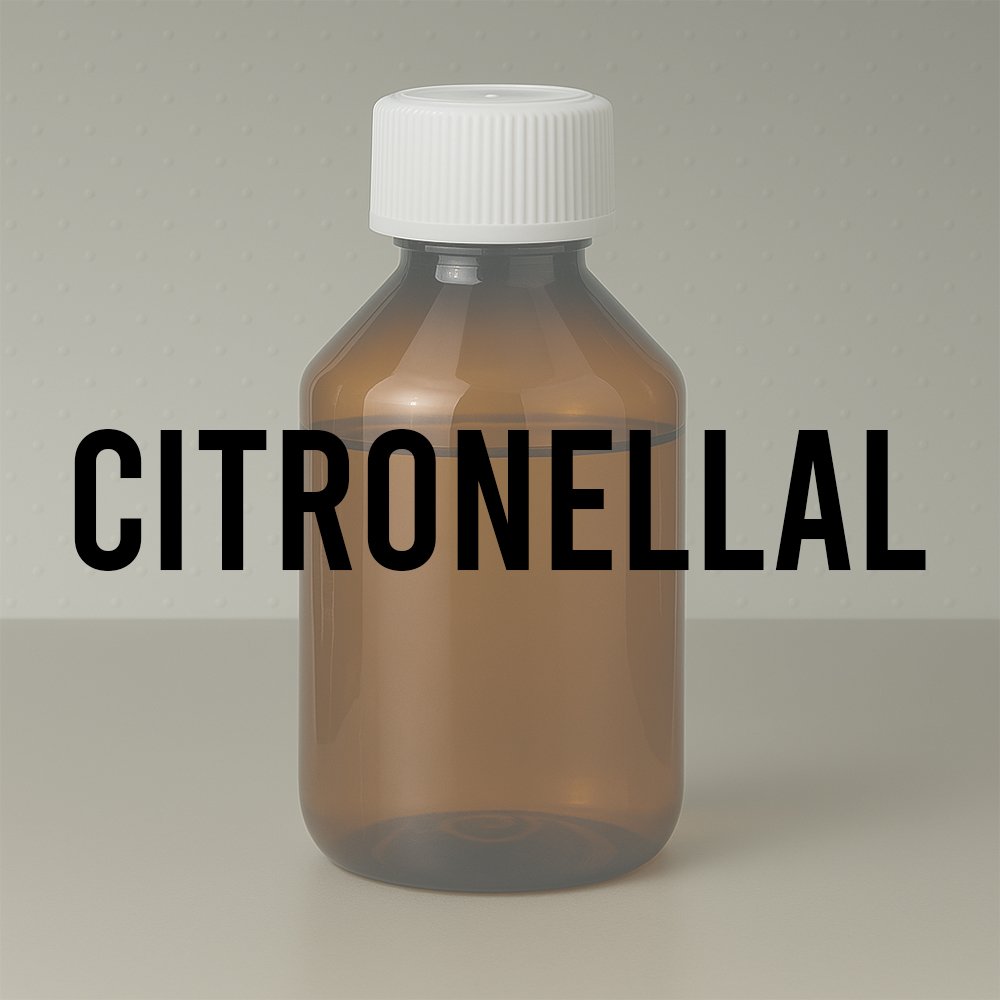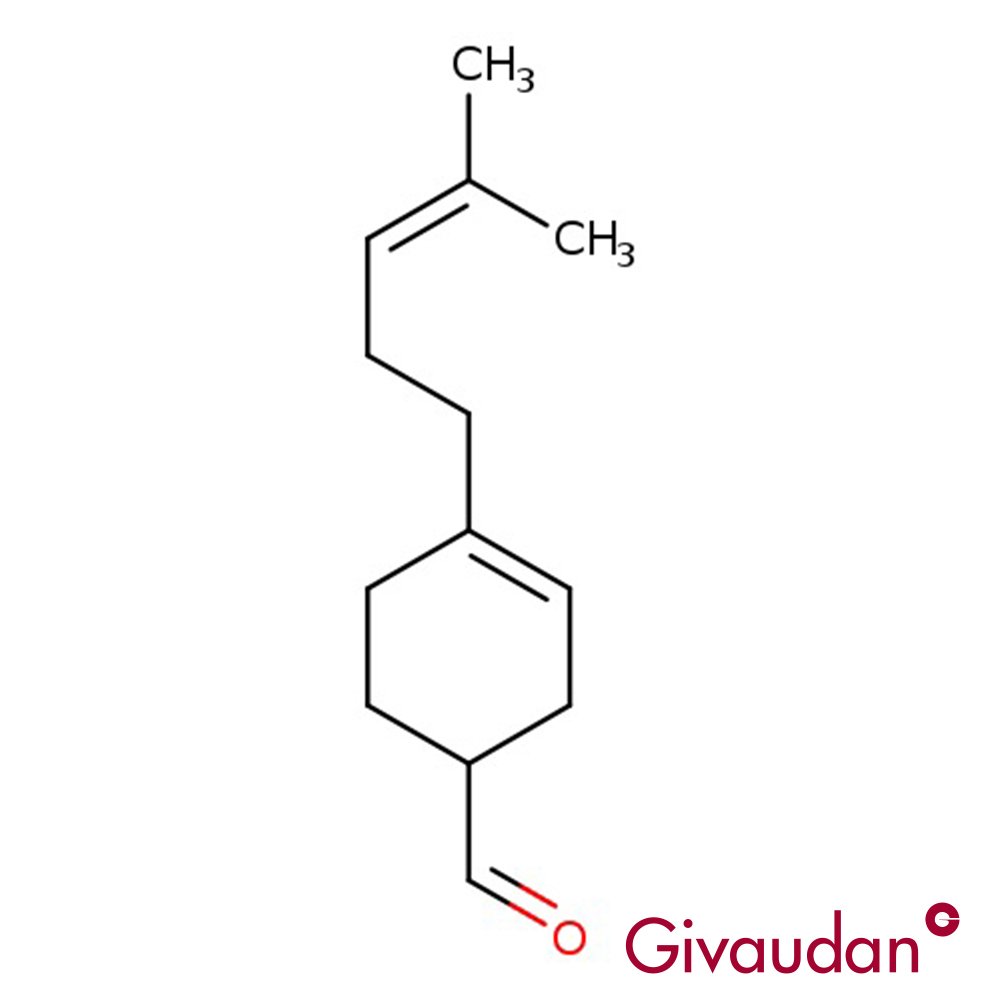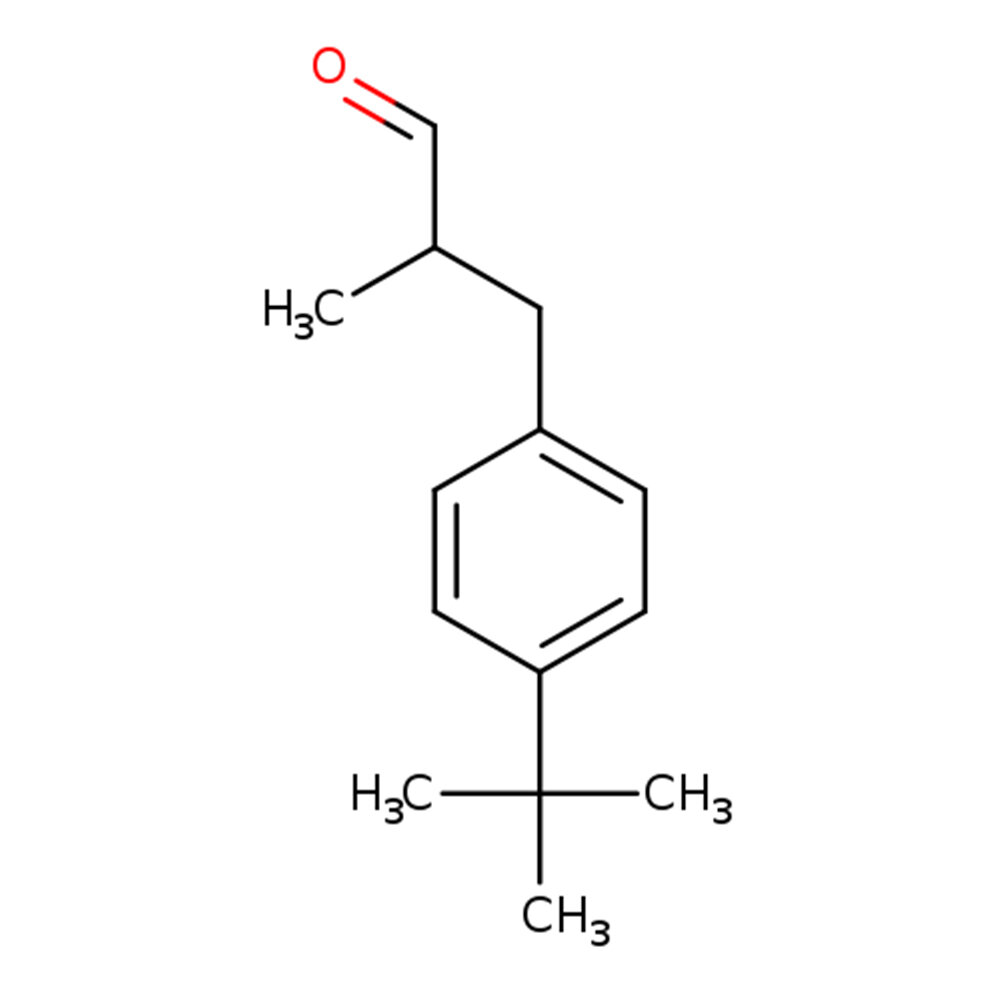 Image 1 of 2
Image 1 of 2

 Image 2 of 2
Image 2 of 2



Citronellal
Synthetic Ingredient for Perfumery
Citronellal is a widely used synthetic monoterpenoid aldehyde, valued in perfumery for its vibrant, lemony freshnessand moderate tenacity. It forms the olfactory backbone of citrus and lemongrass accords, often paired with rose and floral structures to add lift, brightness, and a distinctive clean-green edge. With a molecular structure conducive to both natural and industrial synthesis, citronellal plays an essential role across fragrance, flavor, and functional product sectors.
Synthetic Ingredient for Perfumery
Citronellal is a widely used synthetic monoterpenoid aldehyde, valued in perfumery for its vibrant, lemony freshnessand moderate tenacity. It forms the olfactory backbone of citrus and lemongrass accords, often paired with rose and floral structures to add lift, brightness, and a distinctive clean-green edge. With a molecular structure conducive to both natural and industrial synthesis, citronellal plays an essential role across fragrance, flavor, and functional product sectors.
Synthetic Ingredient for Perfumery
Citronellal is a widely used synthetic monoterpenoid aldehyde, valued in perfumery for its vibrant, lemony freshnessand moderate tenacity. It forms the olfactory backbone of citrus and lemongrass accords, often paired with rose and floral structures to add lift, brightness, and a distinctive clean-green edge. With a molecular structure conducive to both natural and industrial synthesis, citronellal plays an essential role across fragrance, flavor, and functional product sectors.
Technical Ingredient Overview
🔎 Chemical Name — Citronellal
🧪 Synonyms — 3,7-Dimethyl-6-octenal, Rhodinal
🧬 Chemical Formula — C₁₀H₁₈O
📂 CAS — 106-23-0
📘 FEMA — 2303
⚖️ MW — 154.25 g/mol
📝 Odor Type — Citrus, aldehydic, floral
📈 Odor Strength — Medium to strong
👃🏼 Odor Profile — Fresh lemony, citronella-like, slightly green and rosy
⚗️ Uses — Fragrance compositions (citrus, floral, rose), flavoring, insect repellent
🧴 Appearance — Colorless to pale yellow liquid
What is Citronellal?
Citronellal is a monoterpenoid aldehyde naturally found in Cymbopogon nardus and Cymbopogon winterianus. It contributes a characteristic lemony-green scent to citronella oils and serves as a precursor for Citronellol, Menthol Crystals, and Hydroxycitronellal.
Historical Background
Isolated in the 19th century from citronella oil, citronellal became key in the rise of terpene chemistry. Its relevance grew through its role in menthol and aldehydic floral material synthesis during the 20th century.
Olfactory Profile
Family: Citrus-floral aldehydic
Descriptors: Lemon, citronella, green, rosy
Volatility: Top to heart
Tenacity: Moderate
Fixative Role: Limited
Applications in Fine Fragrance
Bright citrus top notes
Reconstructed rose accords with Geraniol Fine 98% and Citronellol
Green florals and fougères
Air fresheners and functional perfumery
Key Pairings
Industrial & Technical Uses
Trace-level flavoring agent
Key active in insect repellents
Intermediate for menthol and citronellol
Used in soaps and cleaning products for freshness
Safety & Regulatory Information
IFRA: Use restricted (see IFRA 51st Amendment)
GHS Classification:
Skin Irritant (Cat. 2)
Skin Sensitizer (Cat. 1)
Aquatic Hazard (Cat. 2)
EU Regulation: Allergen labeling required
REACH: Registered
FEMA: 2303 — GRAS status for food use
Storage: Protect from light and air to avoid oxidation
References
Arctander, S. (1960). Perfume and Flavor Chemicals (Aroma Chemicals). Montclair, NJ: Published by the author.
Sell, C. S. (2019). The Chemistry of Fragrances: From Perfumer to Consumer (3rd ed.). Royal Society of Chemistry.
IFRA. (2023). IFRA Standards – 51st Amendment. International Fragrance Association. Retrieved from https://ifrafragrance.org
PubChem. (n.d.). Citronellal (CID: 7794). National Center for Biotechnology Information. Retrieved from https://pubchem.ncbi.nlm.nih.gov/compound/7794
FEMA (Flavor and Extract Manufacturers Association). (n.d.). GRAS Substances (SCOGS) Database — FEMA No. 2303.




